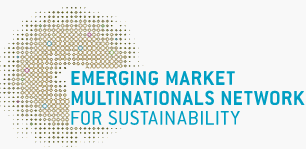Decode the logic of responsible investment
2022-05-26GoldenBee责任编辑0
“The transition to a low-carbon economy will profoundly affect all stakeholders, including workers, suppliers and clients.” Michael Salvatico, Head of Asia Pacific ESG Business Development in S&P Global, stressed in an interview with China Sustainability Tribune that ESG investment has definitely become a mainstream.
Compared with traditional investment strategies, ESG investment incorporates the assessment of non-financial factors, including environmental impact, social responsibility and corporate governance, into investment decisions, which is an emerging investment strategy focusing on long-term investment returns.
For investors, if they want to comprehensively assess the ESG performance of enterprises, their environmental and social risks and future value creation ability, ESG rating and index are needed to provide multi-dimensional information reference. How professional rating agencies think of ESG’s investment strategy? Where will ESG investment and practice go under the impact of COVID-19 and climate crisis? Michael Salvatico shares his insights.
Pandemic-driven surge in ESG investment
Q:S&P Global expects that social bonds will become the fastest-growing segment of the sustainable debt market in 2020. On what basis will S&P make such judgment? Do you think ESG investment has become a mainstream? What are the indications? What are the driving factors?
A:Investors are placing stronger value on the purpose, impact and sustainability of a company. As they look beyond the traditional financial analysis, the ESG bond market can play an important role in meeting their growing needs. The debt market has been an important asset class for sustainable investment through the established framework of green bonds which reached issuance of $257.5 billion in 2019. Newer forms of sustainable debt such as social bonds have grown quickly over 2020. Globally, social bonds issued in 2020 up to the 15th May were $42.3 billion, already more than 200 per cent of the total 2019 issuance of $13.7 billion. Asia Pacific also saw strong growth in social bonds which increased 29% in the 12 months to June 15 2020.
There are several reasons to this judgement. There is an increase in realization of the climate emergency the world faces and the need to redirect capital to solve for the risks resulting from climate change. Separately, a combination of science, maturity of financial markets, expectations of society could have led to a greater focus on shifting capital to sustainable solutions.
ESG investments have definitely become a mainstream. We are on the edge of the largest generational transfer of wealth in history to millennials. As of 2019, 95% of millennial investors indicated they placed strong value on the purpose, impact and sustainability of a company, and were interested in sustainable investing. Investors, businesses and governments are seeing these developments and seeking ways to act on it. We are also seeing record number of inflows into funds that invest according to ESG principles attracted net inflows of USD71.1bn globally between April and June in 2020, pushing assets under management in the products to a new high of just over USD1tn, according to Morningstar.
Political and regulatory agendas certainly have influence on ESG measurements and recent trends globally have increased attention on harmonizing reporting standards. Some of the leading ESG reporting organizations have committed to collaborating on guidance for sustainability standards. The Carbon Disclosure Project (CDP), the Climate Disclosure Standard Board (CDSB), the Global Reporting Initiative (GRI), the International Integrated Reporting Council (IIRC) and the Sustainability Accounting Standards Board (SASB) announced their commitment to developing a shared capital market standard.
Q:Some people think that the COVID-19 pandemic will accelerate ESG investing. Do you agree with it? To your knowledge, what positive signals have emerged?
A:The COVID-19 pandemic has definitely accelerated the trend of ESG investments. Firstly, organizations are putting people first. The ability of an economy to make grand adjustments for a significant event implies the significant changes required to deal with climate change are possible.
Furthermore, it appears that ESG funds have been more resilient to the recent crisis than traditional funds. During Q1 2020, global sustainable funds had inflows of USD45.7bn, while the broader fund universe had outflows of USD384.7bn. Many ESG and climate focused funds have been outperforming; the S&P500 ESG index has outperformed the S&P500 by 2.5% over the past year and, even more striking, the S&P 500 Paris-Aligned Climate Index has outperformed the S&P500 by 4.92%. As a consequence, investors are scrambling to offer new Climate, ESG and Positive Impact products.
Greater focus on measuring climate risks
Q:In your opinion, what kind of effect can ESG Scores produce? What its role in sustainable financial ecology? What changes have or are most likely to occur in applying ESG Scores in the past decade or the next decade?
A:ESG Scores can create better investment that lead to a better world, greater financial wealth and ecological wealth. The Scores assess ESG factors expected to have an impact on a company’s growth, profitability, capital efficiency, and risk exposure.
S&P Global ESG Scores have always believed that financial analysis is incomplete if it ignores material extra-financial factors. Sustainability trends such as resource scarcity, climate change or an aging population continuously reshape a company’s competitive environment. Evidence suggests that many of these factors previously referred to as extra-financial have a financial consequence. We are convinced that companies that can adapt to such challenges through innovation, quality and productivity enhance their ability to generate long-term shareholder value.
In the past decade, we put greater focus on integration, tilting strategies towards better ESG scoring companies. In the next decade, I believe we will put greater focus on measuring climate risks and trajectories to a low carbon, Paris-aligned future. As the impacts of climate change affect the frequency and intensity of physical hazards, investors and companies will pay more attention to the human and asset level risk from heat-waves, hurricanes, floods and sea-level rise. Investors will have a greater focus on assessing the positive output of company’s behavior as measured by United Nation’s Sustainable Development Goals (SDGs) and the EU Taxonomy. We will also put greater focus on supply chain exposures, including emissions, water, waste, energy and pollution. Being able to measure and manage these risks will be critical.
Q:Specifically, how does the S&P 500 ESG Index evaluate a company's CSR performance? What are the factors that affect a company's ESG score?
A:For the calendar year 2020, the S&P Global ESG Index outperformed by 144 basis points. The index uses S&P Global ESG Scores that are powered by the strength of our ESG data and research, which we have greatly increased through the acquisition of the ESG ratings business of RobecoSAM. Through this acquisition, S&P Global clients are able to unlock a rich dataset of S&P Global ESG Scores, based on the SAM Corporate Sustainability Assessment (CSA).
The S&P Global ESG Scores rest on the solid, 20-year old foundation of the CSA, created by investment practitioner to assess financially material ESG factors. The CSA uses an industry-specific approach, combined with a highly engaged assessment process. In 2019, more than 1,200 of the world’s largest companies actively provided public and private data on an annual basis, allowing for an in-depth analysis of corporate sustainability performance that goes above and beyond what can be derived from public disclosure.
The S&P Global ESG scores will also enable ESG portfolio analyses that will provide investors with deep insights into ESG performance at a portfolio level or across consolidated holdings through the traditional lens of portfolio attribution analysis, including benchmark comparison to explain the effect of stock selection and sector allocation decisions.
Q:From a professional perspective, how should we emphasize and recognize the importance of ESG to enterprises and investors? What are the difficulties encountered by companies from ESG disclosure to the integration into corporate management? Do you have any recommended approaches or practices?
A:There isn’t a one-size-fit-all element for policy-influencing ESG measurement, but having multiple stakeholders as part of the discussion, and a public/private sector partnership, will enact more changes and transparency around ESG.
Organizations should choose a well-known, trusted and credible provider to assist with reporting. Since its launch in 2016, the Taskforce on Climate-related Financial Disclosures (TCFD) was setup by the Financial Stability Board (FSB) to help increase the transparency of climate-related financial risks across capital markets. Recognizing that climate change could affect the stability of the global economy, the TCFD provides a set of recommendations for companies and investors on how to disclose clear, comparable and consistent information about the risks and opportunities presented by climate change.
Companies and investors should report in line with the TCFD recommendations and start to integrate climate-related issues into their business and investment decisions. Separately, companies should also measure ESG criteria using an assessment such as the SAM Corporate Sustainability Assessment (CSA).
Growing expectations on companies in emerging markets
Q:From your observation, what are the differences between the ESG investment in China and that in Europe and the US? What challenges does ESG investment face in the global and emerging markets context?
A:If you consider ESG as a mean of measuring and implementing good governance, work force equality and safety, and good stewardship of the natural and physical environmental, then ESG applies to same way to everybody, every-entity, everywhere in the same way. There should be no difference between the adoption of sustainable business or ESG Investing in China or Europe or the US.
The criterion that are analysed to assess the strength of a company’s policies, procedures, exposure and performance on ESG before applies to all companies in all locations.
The ESG issues are the same, the difference has been the rate of adoption. Developed markets had a head start. Initial signatories of the UNPRI, launched in 2006, were developed market participants. The adoption of ESG investing was largely led by European investors. However, sustainability and ESG investing has quickly become a global phenomenon and emerging market corporates and investors are no exception. Widespread social awareness and the global nature of trade and investing has been a driver of the rapid adoption in developed markets.
Global nature of trade means that China and broader Emerging Markets form the supply chain of many developed market companies. As developed market companies review the social and environmental risks (especially climate risk) in their supply chain, Chinese companies will come under pressure to have strong and improving ESG policies, procedures and practices.
Remember that there are advantages for those companies with stronger ESG criteria. For example, better human capital policies and practices can lead to better and longer tenure of top talented employees.
There have been barriers to rapid adoption in Emerging markets. The variety of local languages across emerging markets originally hindered the advance and flow of ESG direction, information and data. A critical component of ESG data is comparability and consistency in reporting over the years. Many ESG Scoring models require reporting over a period of time as the models use averages over a series of years (for instance four-year averages) to determine trends.
However, the expectations on emerging markets’ companies have grown through the increase demand for information from investors, and more recently from global business customers, local emerging market regulators, exchanges and industry groups.
Q:What other information do you want to share with the ESG stakeholders in China?
A:It is clear from many indicators that the rate of change of adoption of ESG is increasing. The momentum of ESG adoption in China is growing rapidly. China is an important part of the global solution for businesses to be profitable, sustainable and responsible. Any emerging market country that desires to be a global partner will benefit from integrating ESG in corporate and investor behavior.
Best Practices
- The 100-year brand — Air Liquide also has a sense of juvenile
- Beijing Public Transportation Corporation: Developing green transportation to build a harmonious and livable capital
- CGN: Building a modern factory in barren deserts and developing a new win-win cooperation model along “Belt and Road”
Upcoming Event

All the materials on the site “Source: XXX (not from this site)” have been reprinted from other media. They do not imply the agreement by the site.
All the materials with “Source: CSR-China Website” are the copyright of CSR-China Website. None of them may be used in any form or by any means without permission from CSR-China Website.
GoldenBee Official WeChat
Copyright © Csr-china.net All Right Reserved.
京ICP备19010813号










